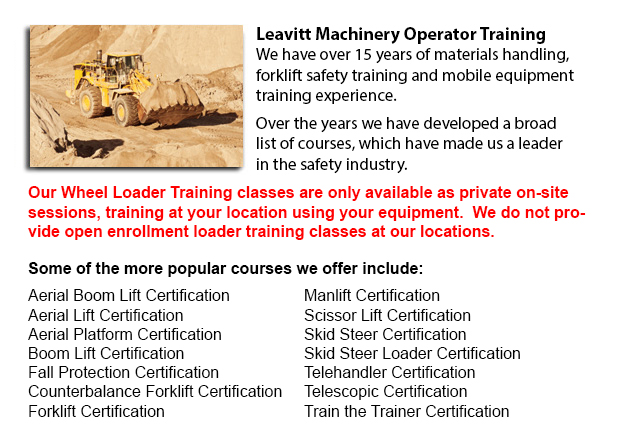
Lift trucks are obtainable in many different models that have different load capacities. Most standard forklifts utilized inside warehouse settings have load capacities of 1-5 tons. Larger scale units are utilized for heavier loads, like for instance loading shipping containers, could have up to fifty tons lift capacity.
The operator can use a control in order to lower and raise the tines, that can likewise be referred to as "blades or tines". The operator of the lift truck can tilt the mast in order to compensate for a heavy loads propensity to angle the forks downward. Tilt provides an ability to function on rough ground as well. There are annual competitions meant for skilled lift truck operators to contend in timed challenges and obstacle courses at regional lift truck rodeo events.
General operations
All forklifts are rated for safety. There is a particular load limit and a specific forward center of gravity. This very important information is supplied by the maker and situated on the nameplate. It is vital loads do not go beyond these details. It is unlawful in a lot of jurisdictions to tamper with or remove the nameplate without getting permission from the forklift manufacturer.
Most forklifts have rear-wheel steering to be able to enhance maneuverability. This is specifically helpful within confined spaces and tight cornering areas. This type of steering varies fairly a little from a driver's first experience together with various vehicles. As there is no caster action while steering, it is no needed to utilize steering force in order to maintain a continuous rate of turn.
Instability is one more unique characteristic of forklift utilization. A constantly varying centre of gravity happens with every movement of the load between the lift truck and the load and they must be considered a unit during use. A forklift with a raised load has centrifugal and gravitational forces which may converge to lead to a disastrous tipping mishap. So as to avoid this possibility, a forklift should never negotiate a turn at speed with its load raised.
Forklifts are carefully made with a cargo limit utilized for the blades. This limit is lowered with undercutting of the load, which means the load does not butt against the fork "L," and likewise decreases with tine elevation. Generally, a loading plate to consult for loading reference is situated on the lift truck. It is dangerous to utilize a forklift as a worker hoist without first fitting it with certain safety tools like for instance a "cherry picker" or "cage."
Forklift use in distribution centers and warehouses
Forklifts are an important part of distribution centers and warehouses. It is essential that the work environment they are positioned in is designed so as to accommodate their efficient and safe movement. With Drive-In/Drive-Thru Racking, a lift truck needs to go in a storage bay which is many pallet positions deep to put down or obtain a pallet. Operators are usually guided into the bay through rails on the floor and the pallet is located on cantilevered arms or rails. These tight manoeuvres require skillful operators to carry out the task efficiently and safely. Since each and every pallet needs the truck to go in the storage structure, damage done here is more frequent than with different kinds of storage. If designing a drive-in system, considering the size of the tine truck, including overall width and mast width, need to be well thought out in order to guarantee all aspects of a safe and effective storage facility.
-
Telehandler Training Fort Mcmurray
Telehandler Training Fort Mcmurray - Telehandlers or also called Telescopic handlers are very popular piece of heavy construction equipment most often utilized in agriculture and construction industries. These machines have extreme reaching capabilit... More -
Counterbalance Forklift Training Fort Mcmurray
Counterbalance Forklift Training Fort Mcmurray - Counterbalance Forklift Training courses are always in high demand. The Counterbalance forklift is a forklift that is made along with a weight that counters the balance, evenly spreading the weight of... More -
Heavy Equipment Training School Fort Mcmurray
Heavy Equipment Training School Fort Mcmurray - HEO or the heavy equipment operator courses will provide you with the knowledge and skills required in order to enter the workforce as an entry level heavy machine operator. In this 12 week course in ad... More -
Operator Safety Training, Re-Qualification Training, In-House Instructor Training in Fort McMurray
Used in just about all boat yards, industrial construction sites or warehouse operations, the forklift is a very important component in order to help pick up and transfer supplies. The reach feature of a lift truck could help improve the applications... More -
Heavy Equipment License Fort Mcmurray
Heavy Equipment License Fort Mcmurray - A heavy equipment license can be obtained by finishing a certification and preparation course at a private training school or a vocational school. This license would qualify you to operate various types of heav... More -
Boom Lift License Fort Mcmurray
Boom Lift License Fort Mcmurray - To operate an aerial boom lift, operators must be licensed through training that can be obtained utilizing both practical training and classroom sessions and by obtaining a boom lift license. Instruction must be give... More -
Skid Steer Loader Training in Fort McMurray
A skid-steer loader is actually an engine powered machine that consists of a small and rigid frame. It is outfitted along with lift arms which are used to attach to different labor saving attachments and tools. Normally, skid-steer loaders are four-w... More -
Order Picker Ticket Fort Mcmurray
Order Picker Ticket Fort Mcmurray - Order picker's enables warehouse employees to lift pallets using forks. Likewise called a stock picker, this electrically-powered equipment is like a forklift except that an order picker is likewise utilized to lif... More

Forklift Training Fort McMurray
TOLL FREE: 1-888-254-6157
Fort McMurray, Alberta
forklifttrainingfortmcmurray.com
Email Us
About Us


